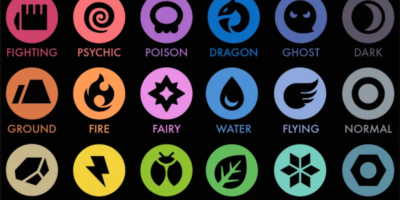Friday September 21st, 2012 was a grand day for not only the University of Waterloo but also the region of Waterloo with the long awaited visit of Dr. Stephen Hawking to campus opening of the Mike and Ophelia Lazaridis Quantum-Nano Centre (QNC). The $160 million building, that will be used to create a vast array of really cool-sounding and hopefully non-cancerous technologies, was opened with spectacular glory. However, there are many details about the QNC which are not common knowledge, and it is our duty and privilege to report here to you our list of top things you probably have not heard about the Quantum-Nano Center.
Why exactly it took so long to build: Many people are wondering why this building, originally slated for opening in time for use by the Nanotechnology Engineering class of 2010, was so delayed. The primary reason was difficulties in construction given the nature of the building and facilities it would house. For example, when designing aspects of the building, the architects could not be simultaneously aware of how quickly it would take to build and where things would go. Furthermore, construction workers were not allowed to observe what they were working on, lest its form collapse instantaneously. Lastly, the initial plan which required years to design was to take a top-down approach to construction and build a much larger facility which would be successively scaled down. It was later decided that this was ridiculous and bottom-up approach was opted for instead.
It still isn’t done yet: Many classes, graduate students and researchers have been promised the QNC for years, and at long last it is finally complete almost complete. Despite the fact that the building itself has been erected the lab spaces are currently more barren than your sister. Yes, while everything was pretty enough for the ribbon-cutting, what most people didn’t realize is how much of it was smoke-and-mirrors. In fact the most advanced piece of technology in the QNC on its opening was Dr. Stephen Hawking. For example, the yellow rooms for fabrication were actually just behind tinted glass, and the physics written on the white boards which line the corridors was mostly just gibberish transcribed from Nanotechnology Engineering students’ attempts at their Quantum Mechanics assignments. One whiteboard, however, was actually adorned with a famously unsolved problem in quantum physics and left overnight; the next morning the heads of the IQC were stunned to find that it had been solved despite the fact that only custodial staff had access to the building. Though, upon closer inspection it was discovered to be, in fact, a crudely-drawn penis.
Noise-Proofing: Many of you have probably heard that special care was taken into the construction of the QNC to ensure that the highly-sensitive and persnickety experiments could detect actual signals and not be affected by a grad student dropping the bass from his seafood lunch and producing miniscule vibrations in the structure. However, few know the extent of the actual steps taken. At the suggestion of contractors from S.H.I.E.L.D., vibrational interference was minimized by coating the entire building in a vibranium alloy imported from Wakanda. Electromagnetic radiation is another potential source of error for many precise quantum experiments. To minimize this issue, very little steel is used in the building and rebar reinforcement is made from fiberglass to prevent electromagnetic induction effects. Additionally, the walls are lined with PowerBalance ion wristbands containing negative ions from volcanic ash. Builders had to visit 743 mall kiosks to supply the entire building, a contributor to the delay in opening the center. Finally, the building also has protection for and from its most valuable resource: ideas. Tachyon-emitters have been designed to interfere with the psionic abilities of would-be intruders and sources of interference.
The Longevity of the Building: The QNC is designed to facilitate the cutting edge of research, but the cutting edge of the future is hard to predict and we want to remain relevant. To ensure that the facility will be useful for many years to come, great care has been taken to ensure the versatility and long lifespan of the QNC. Many labs are actually not at all structurally supportive, such that they can be totally demolished and renovated to accommodate for the needs of the future and catastrophic accidents of the present. To ensure that no other building could be built to rival its majesty the Sultan of Engineering ordered the hands of all the workers who built the center to be cut off. To take a step further, the researchers at WIN are currently working on a grey-goo of nanobots that will be sent out to consume competing facilities, ensuring the QNC’s supremacy.
The Generous Contributions of Mike and Ophelia Lazaridis: There is a reason that Mike and Ophelia’s names appear on the building: they have personally donated the enormously generous sum of $100 million to this project about which they care deeply. What you might not know, however, is that Mike has been so personally invested in the QNC project that many ideas of his were used, though some have drawn criticism. Concerns have been raised over the operating systems and small screen-sizes of the equipment within the facility being suboptimal and that many functions would run much more smoothly through the use of humanoid robotic aids (android devices). Also, they find that the app world leaves much to be desired.
So now that you’ve heard about the inside-story, be sure to take a tour of the fabulous QNC on its public open house Saturday, September 29th and keep in mind all of the little details which are behind this exciting new step for Waterloo. To quote 3rd year Nano student Madailine Libby, “Think small, but dream big.”




Leave a Reply